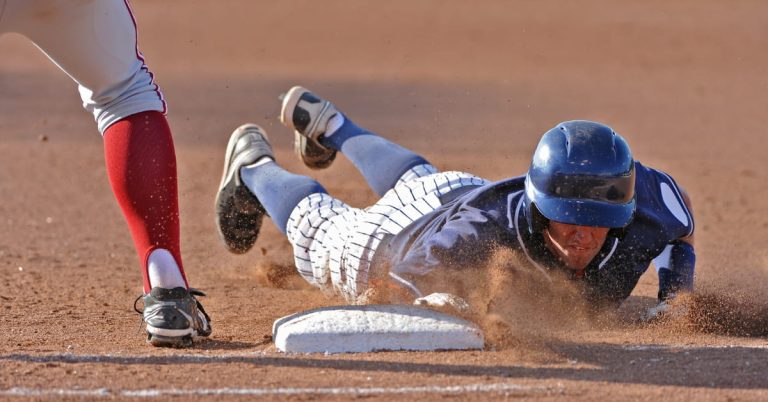Why Baseball Players Tape Their Wrists?
Wrist taping is a common practice among baseball players. Many spectators wonder why athletes tape their wrists during games. This article will shed light on the reasons behind wrist taping in baseball and help you understand its importance for players.
Why Baseball Players Tape Their Wrists?
Injury Prevention
One of the primary reasons baseball players tape their wrists is to prevent injuries. The wrists are vulnerable to various injuries during gameplay, such as sprains, strains, and fractures. Taping provides additional support and stability to the wrist joint, reducing the risk of injuries.
Moreover, wrist taping helps limit the range of motion, preventing excessive movements that could lead to injuries. By restricting unnecessary movements, players can focus on executing precise actions on the field without worrying about potential injuries.
Enhanced Grip and Stability
Another crucial reason for wrist taping is to improve grip and stability. Baseball players need a firm grip on the bat and ball to perform at their best. Wrist taping enhances grip by providing additional support to the muscles and tendons in the wrist and hand.
Furthermore, wrist taping helps maintain stability during gameplay. A stable wrist allows for better control over the bat, resulting in more accurate swings and increased power. By taping their wrists, players can ensure they have a solid grip and improved stability, contributing to their overall performance on the field.

Improved Performance
Wrist taping can also have a positive impact on a player’s performance. Throwing strength and accuracy are vital components of baseball, and wrist taping can help improve both. By providing support to the wrist joint and surrounding muscles, taping enables players to throw with greater force and precision.
Additionally, wrist taping can help reduce fatigue during gameplay. The extra support provided by the tape helps alleviate stress on the muscles and tendons, allowing players to maintain their energy levels throughout the game. With less fatigue, players can perform at their peak for longer periods, contributing to their team’s success.
Taping Techniques and Materials
Baseball players can use various taping techniques to achieve the desired level of support and stability. Some common techniques include the circular method, the figure-eight method, and the fan method. Each technique offers different benefits, and players can choose the one that best suits their needs and preferences.
When it comes to tape materials, there are several options available. The most common types of tape used in baseball are athletic tape and kinesiology tape. Athletic tape is a rigid, non-elastic tape that provides strong support and restricts movement. On the other hand, kinesiology tape is a stretchy, elastic tape that offers more flexibility while still providing support.
Both types of tape have their advantages, and players can choose the one that best fits their needs. Some players may prefer the rigid support of athletic tape, while others may opt for the flexibility and comfort of kinesiology tape.

Superstition
Some players believe taping their wrists brings good luck. They may tape their wrists before every game or only when they’re feeling especially nervous. Suppose a player is superstitious about taping his wrists. In that case, he might not want to use kinesiology tape because it doesn’t have the same psychological effect on him as athletic tape does.
Sweat reduction
It helps maintain grip by reducing sweat during gameplay. This is especially important for athletes who play in hot, humid climates. Athletic tape can make the hand slippery, which can reduce the player’s ability to grip a ball or bat.
However, kinesiology tape doesn’t have this effect because it contains no adhesive and doesn’t leave behind any residue when removed.
Conclusion
There are several reasons why baseball players tape their wrists, including injury prevention, enhanced grip and stability, and improved performance. By understanding the importance of wrist taping and implementing proper techniques, players can optimize their performance on the field and reduce the risk of injuries.
So, the next time you watch a baseball game and notice players with taped wrists, you’ll know the reasons behind this practice and appreciate the benefits it provides. Whether you’re a player, coach, or enthusiast, understanding the importance of wrist taping can help you gain a deeper appreciation for the sport and its intricacies.








